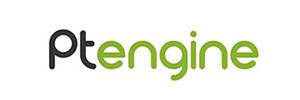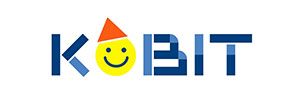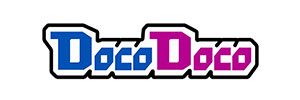
3C Analysis
3C stands for “Customer”, “Competitor”, and “Company” and is a framework for setting KSF from external environment analysis.
- Customer: To find potential customers by analyzing market volume, potential and process of purchase.
- Competitor: To identify strategies to expand the business by analyzing market share, number of competitors, competitors’ strategy, and barriers to entry.
- Company: To clearly understand the strengths and weaknesses of your company by analyzing the sales, market share, and brand impacts of your company.
3C analysis is for understanding your company’s core competencies and competitive advantages against competitors by analyzing the market and customers.
Your assumptions and expectations for the market and your competitors may not always be the case. An analysis using the 3C framework will provide a reality and reasonability check.
(Example) 3C Analysis
- Competitors for chewing gum that polishes the customers teeth might be products like toothpaste.
- The competitor of company S might be a fast food company. Since their main customers are young girls like high school students, they are selling sweet food like soft cream.
- Company “I” has a high market share in the microprocessor industry. To maintain their position, the company partners with companies that make complementary products such as PC manufacturers to create ads to raise brand awareness for their microprocessors; for example, “PC’s powered by Company I”. By raising the brand awareness and brand loyalty, it also raises the barrier for new entrants.
- The digital camera industry previously competed with each other on the merits of weight and pixel count. However, as cell phone cameras took over the market for casual photographers, digital camera companies repositioned their competitive advantage from ease of use, to high performance.
- In the past, the main target of comic books were young people. These days, the target has shifted to middle aged adults as more adults started buying comic books more frequently and at greater quantities. As the demand for bulk purchases were born, some companies started to capitalize on this by buying multiple comic book series in large quantities for lower prices by leveraging their economies of scale or other strengths.
- Prep schools have started teaching liberal arts at universities by utilizing their expertise in liberal arts.
4P Analysis
4P stands for “Product”, “Price”, “Place” and “Promotion”. 4P is also called “Marketing mix”. The elements are controllable and important marketing factors. It is used for identifying key elements that will maximize profit by analyzing your strengths, weaknesses, and problems.
- Product: Comprised of the functions, support, brand and other elements. How a company differentiates its products is important. The product analysis covers a broad range of areas such as product characteristics, product life cycle, costs for switching to other substitutes and so on.
- Price: Prices are decided by looking at results from the 3C Analysis. Some products sell well at higher prices while others do better at lower prices. Discounts and other price campaigns are also factored in.
- Place: There are two ways to look at place. There is wholesale (indirect) and retail sales (direct). Looking at “Place” will help identify which logistics channel is more effective depending on the ultimate goal such as new customer development, data collection, and sales promotion. Also, place elements affect customer convenience.
- Promotion: It consists of ads, direct sales, publicity and shop sales. Viral marketing is also a kind of promotion.
Make a strategy by analyzing the 4P to find strengths, problems, and ways to maximize profit.
(Example) 4P Analysis
- Company W differentiates its brand by selling products at low prices, placing the shops at each terminal station to increase customer convenience, and using organic vegetables.
- Company S has several shops and decides to start a separate laundry cleaning service in their shops. Company S can attract more customers while the laundry service can launch their service without opening their own shops.
- Company A’s strength lies with wide reach and ability to supply a large amount of books to the market. Compared to company S, Company A can reduce shipping cost due to its large logistics route.
- Company U reduces the production costs for their products by producing large amounts for all sizes and various colors. Its retail shops are placed all around stations and by doing so, it increases their awareness and facilitates its promotional efforts.
5 Forces analysis
5 forces are: competitive rivalry within an industry, threat of new entrants, threat of substitute products, bargaining power of buyers, and bargaining power of suppliers. It is useful for developing strategies by looking at the competitive environment.
- Competitive rivalry within an industry: To examine the competition and the industry environment to identify factors that help your business differentiate itself and build a competitive advantage.
- Threat of new entrants:Barrier to entry prevents potential competitors from entering the market. We need to measure the “height” of the barrier when entering a market. If the initial investment costs are high, the cost for switching to other products is high, and/or if products are highly differentiated, than the barrier is high. Sometimes, regulation by government impacts the cost of entering.
- Threat of substitute products: If other services are substitutes, these are considered threats. Substitute services increases competition.
- Bargaining power of buyers: If there is an over supply in any market, the prices go down and the bargaining power of buyers go up. If your products are highly differentiated against other products, buyer power will decrease.
- Bargaining power of suppliers: It stands for strength of product suppliers. A dominant maker has a high power in the market. The same thing can be said for rare antique product suppliers.
By conducting a 5 forces analysis, you understand not only the situation of your company but also the environment. It enables you to formulate well-informed and appropriate strategies.
(Example) 5 Forces Analysis
- (Rival)Company R differentiates its service with their strong brand awareness, promotional power, and unique platform business.
- (New Entries)Since Microsoft Office has high market share, PC users need to use them due to their high adoption rate and compatibility across devices. It is difficult for users to use other products since the cost for switching is high.
- (Substitutes)Comic book publications have decreased as mobile games increased in popularity, competiting for an individual’s leisure time.
- (Buyers)AKB sells various products for lots of fans when they hold concerts. Since some products are exclusively sold based on the event, they are able to drive up demand and maintain high prices.
- (Suppliers) Apple Inc. sets a high sales targets for iPhone. Furthermore, by selling them to Softbank and KDDI, cell phone retailers in Japan, competitions become harsher.
- Apple Inc. supplies iPhones to several cell phone retailers in Japan such as SoftBank and KDDI. Due to the popularity of iPhones, retailers have to compete to get iPhones, giving Apple more power when setting prices.
 Login as
Login as



























;>/img/banner/partner $url=>$index; .png)